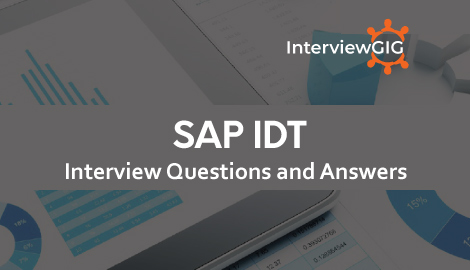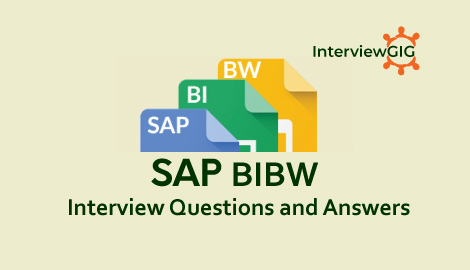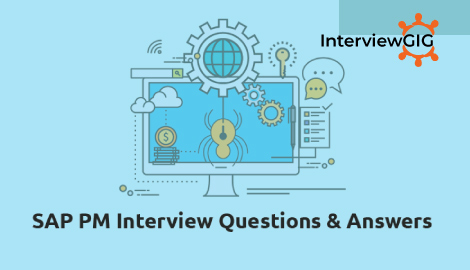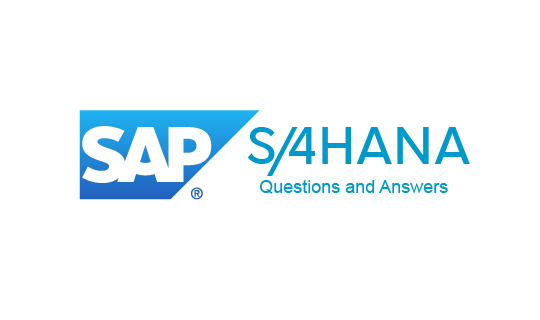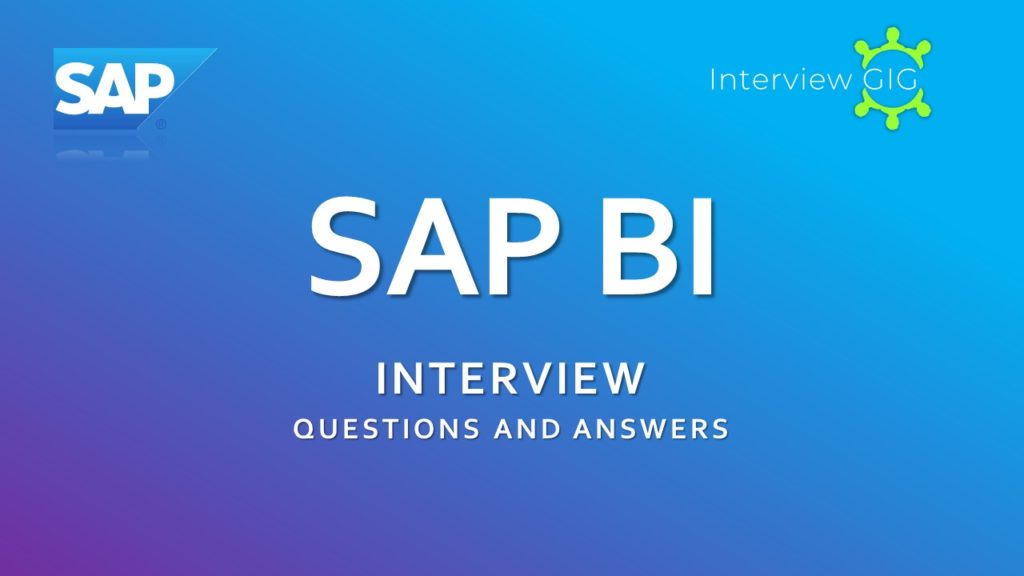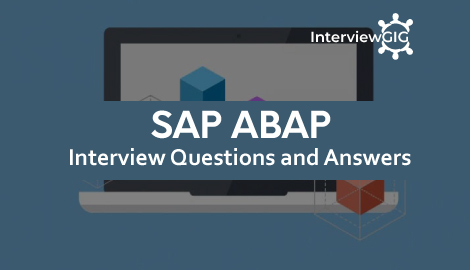What is Information Design tool? Which all reporting and Dashboard tools you have used with IDT?
IDT is known as Business Objects design tool that extracts the data from different data sources using an OLAP and Relational connection to create Universes. There are different Universe parameters that can be passed at time of Universe creation.
It can be used in below reporting and dashboard tools −
- SAP Business Objects Web Intelligence (WebI)
- SAP Business Objects Dashboard Designer (Earlier known as Xcelsius)
- SAP Business Objects Crystal Reports
- SAP Business Objects Explorer
What is the Data foundation and Business Layer in IDT?
Business Layer − This layer contains all the classes and objects, you can check dimensions and measures that are defined in a Universe.
When you publish the business layer in repository, this shows the completion of Universe creation.
You can check the summary of Business Layer to see number of attributes, dimensions, measures, classes, LOV’s etc.
Data Foundation Layer − This layer is used to define data foundation – includes tables from data source, joins, and keys etc.
What is difference between a Relational and an OLAP connection?
- The idea is basically if you need to access data from a table and regular RDBMS then your connection should be a relational connection but if your source is an application and data is stored in cube (multidimensional like Info cubes, Information models) then you would use an OLAP connection.
- Relational connection can only be created in IDT/UDT.
- OLAP can be created in both IDT and CMC.
- Another thing to note is relational connection (including HANA) will always produce a SQL statement to be fired from report while OLAP connection normally create a MDX statement.
When you perform a conversion in UMT, unv files are converted to unx files?
File extension remains same when you run over in UMT. You need to perform a conversion in IDT to change file extension from unv to unx.
When you convert a UNV file to UNX files, which of the features are not supported?
In IDT, it doesn’t convert OLAP universes created with prior releases. It is recommended to make a connection to OLAP source to take dimensional modelling advantages.
You can’t convert universes based on stored procedures using IDT.
Using IDT, you can convert linked universes however they are not supported in BI 4.
What do you understand by custom hierarchies?
They are used to perform custom drill down on objects from same or different classes in Universe. To create a Custom hierarchy, go to Tools → Hierarchies.
What is the difference between a cnx and cns file?
- .cns – secured Repository connection
- .cnx – local unsecured connection. If you use this connection it will not allow you to publish anything to repository.
What is personal, public and secured connection?
A Personal connection is defined as created by one user and cannot be used by other users.
A shared connection can be used by other users through a shared server. You can’t publish a Universe to repository using a shared connection.
A secured connection overcomes the above limitations and you can use this to export Universe to the central repository.
What is Chasm trap? How do you resolve this?
When you join a dimension table with two fact tables with one to many relationship, when you drag a dimension along with measure from both the fact tables, value of measures is inflated. This is called Chasm trap.
This can be solved using Context by creating two different contexts.
Other way is to go to Universe parameters and select the check box → Multiple SQL statements for each measure
What is Fan trap? How do you resolve this?
In a Universe, when you have 3 tables in structure and first table is joined with one to many relationships with second table which is connected with one to many relationships with third table and when you drag a measure from 2nd table and dimension from 3rd table, value of measure is inflated, this condition is called Fan trap.
You can resolve this by creating an alias of the 2nd table and defining contexts so that normal table is joined only with the first table, while the alias is joined with both the 1st and the 3rd table. We would take 2nd table’s measure only from the normal table and other dimensions of the 2nd table from the alias table.
What is Aggregate awareness? How do you use this?
Using aggregate awareness, you can use pre-aggregated data in tables in the database. It is used to improve query performance by processing less number of rows.
When you add an aggregate aware object in query, query generator retrieves the data from table with highest aggregation level.
How to set up Aggregate awareness?
To use aggregate awareness, first the aggregated table has to be loaded to database and then add the table to Data Foundation.
Define aggregate aware objects. These are objects in the business layer for which you want queries to use the aggregate tables when possible instead of performing aggregation using non-aggregate tables.
In the SQL expression for the object, define the SELECT statement to use the @Aggregate_Aware function −
@Aggregate_Aware(sum(aggr_table_1), …, sum(aggr_table_n))
What is Index awareness?
Index awareness in a Universe determines which values in a filter conditions of the queries built from the universe, are replaced by their corresponding indexes or surrogate keys. Values in filter comes from dimensions table and you need a join with the fact table to get this value.
What is the use of Query panel?
You can use query panel to create or preview queries on a Business Layer or on the top of Universe published in repository.
Query panel allows you to add objects in the query and to preview the query results.
What is a derived table and why do you use it?
A derived table is a virtual table in the data foundation that combines other tables using calculations and functions.
You can use derived tables for below purpose −
- To create a table with columns from other tables. The column definitions can include complex calculations and functions.
- To create a single table that combines two or more tables.
- To create a table that contains a selection of columns from different tables.
- To Insert Derived table, select table header → right click → Insert → Derived table.
How you can access a derived table from other derived table?
By using derived table function
@derived_table(Derived Table Name)
What is an alias table and why do we use it in Universe?
An Alias table is known as reference to a standard table in Data Foundation. The data in Alias table is completely same as the original table.
Alias tables are used to break loops in Join path in Data Foundation layer. An Alias table can also be used to rename a table.
What are the different states in Context?
In a context, there are three states defined for a Join −
Included joins − In a part of the schema that is ambiguous, the context solves the loop by defining a path with the included joins.
Excluded joins − In a part of the schema that is ambiguous, the excluded joins define the path that context will never take.
Neutral joins – In a part of the schema that is not ambiguous and are always included in the query path of the context. Any join that is not explicitly included or excluded is neutral.
A Context can be defined manually or by clicking detect Context option.
When you use an OLAP connection to build a Business layer, what happens to objects?
Objects in the business layer are inserted automatically based on the cube. You can add below functions to enhance features in Business Layer −
- Using analytical dimensions, hierarchies, and attributes.
- Named sets
- Calculated members
- Insert measures
- Pre-defined filters (mandatory or optional) to limit data returned in queries
- Parameters with optional prompts
- Lists of values to be associated with a prompt
What is difference between LOV’s and prompt in a query panel filter?
LOV’s allows you to select multiple values from list of available values.
Prompt allows you to select a value at run time.
What do you understand by resource dependency in Universe?
In a Universe there can be many objects which are dependent on each other and moving, deleting a resource can impact other resources that depends on that resource.
To check the dependency between different resources, you can select show local dependency.
What is repository dependency on an object in a local project?
To see dependent resources in Repository for a particular resource under Local project, right click and click on show Repository Dependency.
Enter the session details where resources are published and click on log in. It will show you list of published Universes in repository that are based on selected resource under Local Project.
What is the use of SAP BO Dashboard?
Dashboards designer is SAP Business Objects data visualization tool that is used to create interactive dashboards from different data sources. Dashboard designer allows BI developers to create custom dashboards and analysis that meet the business requirement in an organization.
Dashboards can include different graphs, charts and gauge that are based on the data provided by data sources. Dashboards are used by Senior Management that offers up to date information to information to company CEO’s and VP’s.
What are the different Dashboard versions you have worked on?
- BOXI 3.1 compatible Dashboard is called Xcelsius 2008.
- BOXI 4.0 compatible Dashboard is called Dashboard 4.0.
- BOXI 4.1 compatible Dashboard is called Dashboard 4.1.
What are the options under component browser?
How would you connect SAP ECC system to Dashboard designer?
There are different ways −
You can use SLT method for data replication to SAP HANA and then create a Universe on the top of HANA database. Universe can be consumed in Dashboard using query browser.
You can directly create a Universe on the top of transaction system.
Using transient provider, you can connect ECC to load data to BW and query browser can be used to connect to BW.
How can you add data from a Universe/IDT to Dashboard?
Using query browser, you can click on Add query → Universe as data source
Select the published Universe and to add objects, you can use Query panel.
When query is added, you can do mapping of objects to spreadsheet and later to Dashboard components.
What is docking/undocking concept in Dashboard designer?
It is also possible to move object browser, components browser, Query browser and properties panel from the default locations. To dock a component, you have to click on top of panel and drag it to docking icon. To move a component, you have to first remove auto hiding.
Where do you define behavior, insertion and general properties of a component?
Select the component → right click Properties tab
On right side, you get options to define various properties of a component in dashboard model.
Where can you define color setting for a component in data model? What ae the options in color dialog box?
You can set color for each element of a component in data model. Colors can be defined in Appearance tab under Properties pane.
There are wide range of colors available and you can also create your own custom colors.
To define color for each element, select the element → Go to Color Selector for each element. You can select below sections in color dialog box −
Theme Color − To define color of current theme.
Standard Color − These are group of basic colors.
Recent Color − This shows recently used colors.
What are the different output formats in Dashboard?
- Power point
- Word
- Attach in email
- PDF
What is a container component? What are the different types of Container?
Container component can be nested to create multilayer models. You can use canvas container within main canvas to hold one or more components. You can add, move, delete or change components in panel container.
You can use different types of containers −
What is selector component? What are the different types of selector component?
Selector component allows users to pick different options at run time. Selector can be used to configure item’s row, value, position and label into embedded spreadsheet.
You can add selectors from Component browser in Dashboard designer.
- Check box
- Combo box
- Filter
What is the use of single value component? What are the different styles of single value component?
Single value components are used for adding interactivity to data models. You can use them to add more attention to important parameters.
Single value components can be used in different styles −
- Horizontal Progress Bar
- Vertical Progress Bar
- Dual Slider
- Dual Slider 2
- Dial
What is web connectivity components? What are the different component types?
These components allow you to connect your data model to web. Apart from this, you can also use data manager to configure web connectivity.
URL button − When user clicks at run time, a button links to a relative or absolute URL.
Reporting Service Button − This allows you to connect to reporting services server and select a report to use in data model.
Slide Show − This allows you to create a slide show of URL based images and SWF files.
SWL loader − This allows you to load SWF files from a URL and you don’t have to import the files. It is similar to slide show component but it provides better memory management.
Connection Refresh Button − This allows user to refresh the connection manually when you link to it.
What is query refresh or query prompt under Universe component?
These components can be used with queries on Universe.
Query Refresh Button − This allows user to refresh the data at runtime. You can include Universe or BEX query to allow users to request a query refresh at run time.
Query Prompt Selector − This allows user to select values from BEX or Universe query prompts at run time. As per prompt type, user can select a single value to use as filter parameter or can choose selection objects.
What are the different data connections that are supported in Dashboard Designer?
In SAP Dashboard Designer, below data connections are supported −
- Query as a Web service (QWAAS)
- Web Service Connection
- SAP NetWeaver BW connection
- XML Data
- Crystal Report Data Consumer
- Live cycle Data Services
- External Interface Connection
- Live Office Connections
- Web Dynpro application as Flash Island
